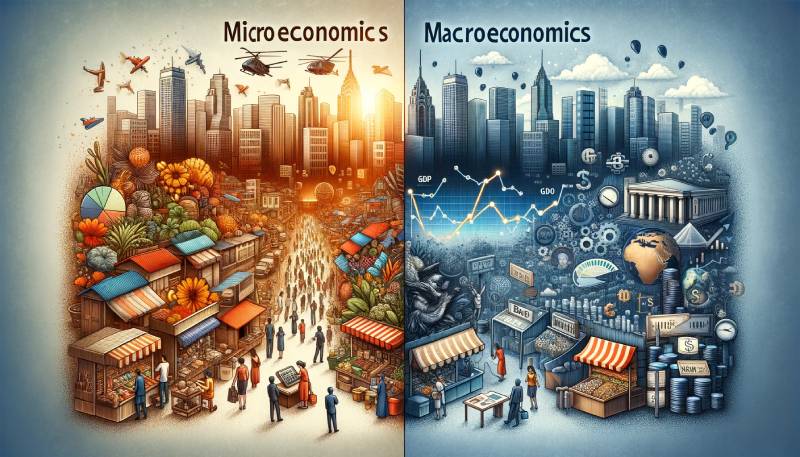Microeconomics and macroeconomics are two main branches of economics that deal with different levels of economic activity.
**Microeconomics** focuses on the behavior of individual actors within the economy, such as households, firms, and governments, and how they make decisions to allocate limited resources. It examines the mechanisms of supply and demand and how they determine the price and quantity of goods and services. It also looks at the production and consumption decisions of individuals and firms, the factors that influence these decisions, and how prices and markets allocate resources efficiently.
Key concepts in microeconomics include:
– Consumer demand
– Production costs and supply
– Market structures (e.g., perfect competition, monopoly, oligopoly, monopolistic competition)
– Price mechanisms
– Individual firm behavior and profit maximization
– Consumer behavior and utility maximization
– Game theory and strategic behavior
– Externalities and public goods
**Macroeconomics**, on the other hand, looks at the economy as a whole and analyzes aggregate indicators such as GDP, unemployment rates, national income, price indices, and the interrelations among these elements. It studies the performance, structure, behavior, and decision-making of an economy as a whole rather than individual markets. This includes regional, national, and global economies.
Key concepts in macroeconomics include:
– Economic growth
– Business cycles (recessions and expansions)
– Inflation and deflation
– Monetary policy and central banking
– Fiscal policy and government spending
– International trade and finance
– Unemployment and labor economics
– Aggregate demand and supply
The primary differences between microeconomics and macroeconomics can be summarized as follows:
1. **Scale**: Microeconomics looks at small-scale economic activities, while macroeconomics looks at large-scale economic phenomena.
2. **Scope**: Microeconomics is concerned with individual markets and the behavior of small economic units, whereas macroeconomics deals with the economy as a whole.
3. **Objectives**: The main focus of microeconomics is on how to reach an equilibrium in individual markets and how to efficiently allocate resources, while macroeconomics aims to manage and stabilize the economy by controlling aggregate demand, inflation, and unemployment.
4. **Interdependencies**: Although they look at different levels, micro and macroeconomics are interdependent. For example, a change in the macroeconomic policy can affect microeconomic decisions (like consumer confidence affecting individual spending) and vice versa.
5. **Policy Application**: Microeconomics can help formulate policies that affect individual markets or sectors, like minimum wage laws or deregulation of industries. Macroeconomic policies are broader in nature, like adjusting national interest rates or government spending programs.
6. **Analytical Methods**: Microeconomic analysis often involves looking at the utility, costs, and other specific factors that influence individual stakeholders. Macroeconomic analysis frequently deals with aggregates and averages, such as total consumption, total output, etc.
Understanding both microeconomics and macroeconomics is crucial, as they provide different but complementary perspectives on how the economy operates. Policymakers, businesses, and investors often rely on insights from both areas to make informed decisions.

